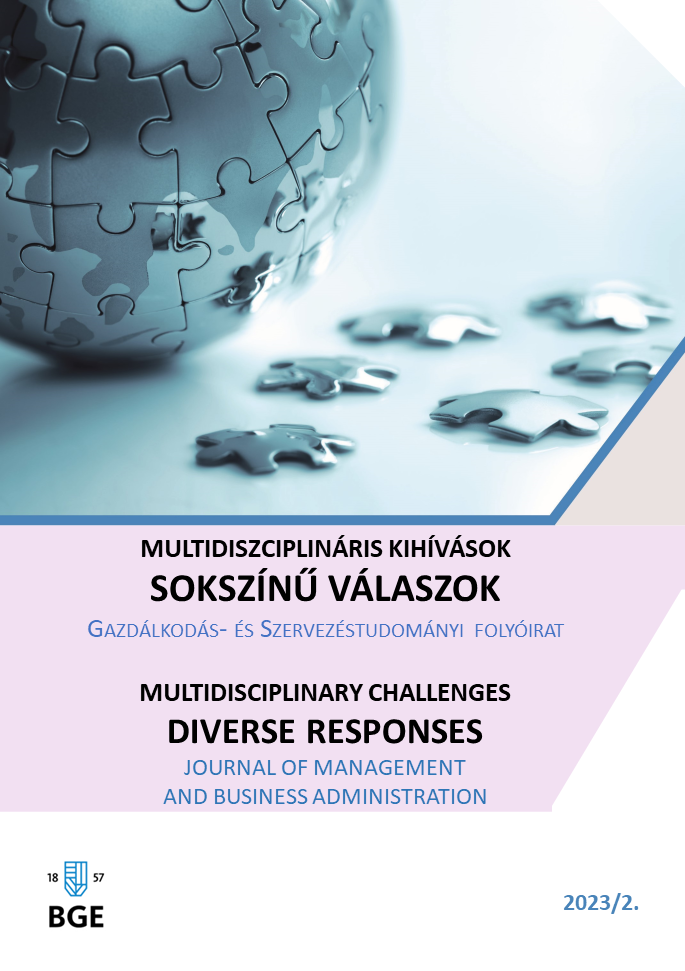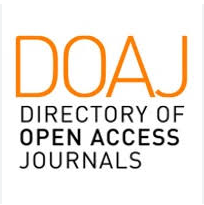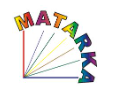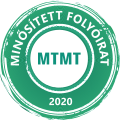Storytelling az értékteremtésben, avagy a szervezeti történetmesélés multidiszciplináris megközelítésben
Absztrakt
Jelen tanulmányunk célja, hogy az ezredforduló után született nemzetközi szakirodalomra fókuszálva új megvilágításba helyezzük a szervezeti történetmesélés, mint hagyományos kommunikációs eszköz újszerű alkalmazási területeit, összekapcsolva a storytelling eszközben rejlő lehetőségeket a vállalati értéknövelésben szerepet játszó driverekkel, a szervezet értékteremtő folyamataival. Tanulmányunkban Edvinsson és Malone, illetve Kayo munkásságára építve vizsgáljuk és értelmezzük a szervezeti történetmesélés lehetséges hozzájárulását az értékteremtéshez. Az értékalapú menedzsment elméleti kereteinek áttekintésén túl a tanulmányban rendszerezzük azokat a modelleket, amelyek a kommunikáció és az értékteremtés kapcsolatrendszerét igyekeznek konceptualizálni. A munkánk során a story és storytelling fogalmi keretezését követően összefoglalást nyújtunk a szervezeti történetek taxonómiájáról, a storytelling klasszifikációjáról, a hatékony történetmesélés pilléreiről és a storytelling menedzsment módszereiről, továbbá a storytelling szervezeti stratégiába integrálásának lehetséges változatairól, alternatíváiról.
Hivatkozások
Ambler, T. & Barrow, S., 1996. The employer brand. Journal of Brand Management. (4), 1-22. https://doi.org/10.1057/bm.1996.42
Anaza, N.A., Kemp, E., Briggs, E., & Borders, A. L., 2020. Tell me a story: The role of narrative transportation and the C-suite in B2B advertising. Industrial Marketing Management. (89), 605-618. https://doi.org/10.1016/j.indmarman.2019.02.002
Antonopoulou, C., 2018. Co-authoring and user interaction in digital storytelling: A case study. In Proceedings of digital culture and audiovisual challenges: Interdisciplinary creativity in arts and technology. Corfu, Greece: DCAC.
Backhaus, K. & Tikoo, S., 2004. Conceptualizing and researching employer branding. Career Development International. (9), 501–517. https://doi.org/10.1108/13620430410550754
Balogh, G., 2015. A regionális tehetséggazdálkodás vizsgálati módszerei a Pécsi Tudományegyetem Közgazdaságtudományi Kar hallgatóinak példáján. Tér és Társadalom. 29(2), 127–148. https://doi.org/10.17649/TET.29.2.2664
Barker, R. & Gower, K., 2010. Strategic Application of Storytelling in Organizations. Toward Effective Communication in a Diverse World. Journal of Business Communication, 47(3), 295–312. https://doi.org/10.1177/0021943610369782
Barrow, S. 2007. The future of employer branding and HR? Employer branding: the latest fad or the future for HR? Chartered Institute of Personnel and Development (CIPD) Guide, CIPD, London
Beigi, M., 2014. Using fictional stories to facilitate training and development. Human Resource Development International. (17), 491-496. https://doi.org/10.1080/13678868.2014.932083
Boje, D., 1991. The Storytelling Organization: A Study of Story Performance in an Office-Supply Firm. Administrative Science Quarterly. 31(1), 106–126. https://doi.org/10.2307/2393432
Boje, D.M., 2008. Storytelling Organizations. London, UK: Sage
Boldosova, V., 2020. Telling stories that sell: The role of storytelling and big data analytics in smart service sales. Industrial Marketing Management. (86), 122-134. https://doi.org/10.1016/j.indmarman.2019.12.004
Caminotti, E. & Gray, J., 2012. The effectiveness of storytelling on adult learning. Journal of Workplace Learning. 24(6), 430-438. https://doi.org/10.1108/13665621211250333
Chandler, N.G. & Németh, T., 2020. Employer Branding: Issues of Tailoring Your Message in the Modern Age, 37-50 in: Machado, C. & Davim, J.P. (szerk.) Entrepreneurship and Organizational Innovation, Springer, https://doi.org/10.1007/978-3-030-19289-1
Chapman, M., 2007. BHSF taps into the graduate talent-bank - SME learns the secret of recruiting, training and retaining the best. Human Resource Management International Digest. 15(2), 30-32. https://doi.org/10.1108/09670730710735744
Chung, K.L. & D’Annunzio-Green, N., 2018. Talent management practices in small- and medium-sized enterprises in the hospitality sector: An entrepreneurial owner-manager perspective. Worldwide Hospitality and Tourism Themes, 10(1), 101-116. https://doi.org/10.1108/whatt-10-2017-0065
Cohen, D. & Prusak, L., 2001. How Social Capital Makes Organizations Work – In Good Company. Concentrated Knowledge for the Busy Executive, 23(8). https://doi.org/10.5465/ame.2001.4617405
Coker, K.K., Flight, R. L., & Baima, D.M., 2017. Skip it or view it: The role of video storytelling in social media marketing. Marketing Management Journal, 27(2), 75-87. https://doi.org/10.1108/jrim-05-2020-0115
Collins, J.C. & Porras, J., 1998. Built to Last. London: Random House
Crişan, C. & Borțun, D., 2017. Digital storytelling and employer branding: an exploratory connection. Management dynamics in the knowledge economy, 5(2), 273 - 287. https://doi.org/10.25019/MDKE/5.2.06
Crowley-Henry, M., O’Connor, E.P. & Suarez-Bilbao, B., 2021. What goes around comes around. Exploring how skilled migrant founder–managers of SMEs recruit and retain international talent. Journal of Global Mobility: The Home of Expatriate Management Research, 9(2), 145-165. https://doi.org/10.1108/jgm-01-2021-0003
Dabirian, A., Kietzmann, J. & Diba, H., 2017. A great place to work!? Understanding crowdsourced employer branding. Business Horizons, 60(2), 197-205. https://doi.org/10.1016/j.bushor.2016.11.005
Denning, S., 2011. What is a story? What is narrative meaning? [online] http://www.stevedenning.com/Business-Narrative/definitions-of-story-and-narrative.aspx (2023. 07.15.)
Dessart, L., & Pitardi, V., 2019. How stories generate consumer engagement: An exploratory study. Journal of Business Research, Volume 104, 183-195. https://doi.org/10.1016/j.jbusres.2019.06.045
Edvinsson, L. & Malone, M., 1997. Intellectual Capital. New York: Harper Business
Eisenberg, E.M., & H.L. Goodall, Jr. 1997. Organizational communication: Balancing creativity and constraint. New York: St. Martin’s Press.
Eskola, A. & Hundal, S., 2021. Organizational Storytelling Translated to Successful Business, Asian Journal of Business and Management, 9(2), 23-34. https://doi.org/10.24203/ajbm.v9i2.6408
Fisher, G., Neubert, E. & Burnell, D., 2021. Resourcefulness narratives: Transforming actions into stories to mobilize support. Journal of Business Venturing, 36(4), 21-25. https://doi.org/10.1016/j.jbusvent.2021.106122
Fog, K., Budtz, C. & Yakaboylu, B., 2010. Storytelling: Branding in Practice (2nd ed.). Berlin: Springer.
Forman, J., 2013. Storytelling in Business – The Authentic and Fluent Organization. Stanford University Press. https://doi.org/10.1515/9780804784955
Foster, C., Punjaisri, K. & Cheng, R. 2010. Exploring the relationship between corporate, internal and employer branding. Journal of Product & Brand Management, 19(6), 401-409. https://doi.org/10.1108/10610421011085712
Franco, M., 2022. Leadership – new insights. London: IntechOpen. E-book. [online] https://kaakkuri.finna.fi (2023. 07.12) https://doi.org/10.5772/intechopen.95224
Gandhi L. & K. Senthil Kumar, 2021. Storytelling Management and its application in organizations. Business Perspectives. 2(2), 1-12. https://doi.org/10.1177/bsp.2021.2.2.13
Gilliam, D.A., & Flaherty, K.E. 2015. Storytelling by the sales force and its effect on buyer-seller exchange. Industrial Marketing Management. (46), 132-142. https://doi.org/10.1016/j.indmarman.2015.01.013
Gorry, G.A., & Westbrook, R.A., 2011. Can you hear me now? Learning from customer stories. Business Horizons, 54(6), 575-584. https://doi.org/10.1016/j.bushor.2011.08.002
Hagel, J. 2021. Every company needs a narrative. Harvard Business Review, May 25. E-journal. [online] https://hbr.org/2021/05/every-company-needs-a-narrative?registration=success (2023.07.04.)
Harris, F., & de Chernatony, L. 2001. Corporate branding and corporate brand performance. European Journal of Marketing. 35(3/4), 441-456. https://doi.org/10.1108/03090560110382101
International Integrated Reporting Council 2013. Value creation: background paper for IR [online] https://www.integratedreporting.org/wp-content/uploads/2013/03/IR-Background-Paper-Capitals.pdf (2023.06.17.)
Itami, H. & Roehl, T.W. 1987. Mobilizing Invisible Assets. Cambridge: Harvard University Press.
James, C.H., & Minnis, W.C. 2004. Organizational storytelling: It makes sense. Business Horizons, 47(4), 23-32. https://doi.org/10.1016/s0007-6813(04)00045-x
Johansen, T.S., & Andersen, S.E., 2012. Co-creating ONE: Rethinking integration within communication. Corporate Communications: An International Journal. 17(3), 272-288. https://doi.org/10.1108/13563281211253520
Kalafut, C.P. & Low, J., 2001. The value creation index: quantifying intangible value. Strategy & Leadership, 29(5), 9-15. https://doi.org/10.1108/10878570110696632
Kayo, E.K., 2002. An estrutura de capital e o risco das empresas tangível e intangível-intensivas: uma contribuição ao estudo da valoração de empresas (doctoral dissertation), University of São Paulo, São Paulo.
Kim, E., Ratneshwar, S. & Thorson, E., 2017. Why narrative ads work: An integrated process explanation. Journal of Advertising. 46(2), 283-296. https://doi.org/10.1080/00913367.2016.1268984
Kirsch, C., 2004. Film and collective storytelling in corporate identity: a case study. Corporate Communications: An International Journal. 9(3), 223-230. https://doi.org/10.1108/13563280410551141
Knox, S., Maklan, S. & Thompson, K.E., 2000. Building the unique organizational value proposition, in Schultz, M., Hatch, M-J. and Larsen, M.H. (Eds), The Expressive Organization, Oxford University Press, Oxford, 138-53.
Krishnan, T.N. & Scullion, H., 2017. Talent management and dynamic view of talent in small and medium enterprises, Human Resource Management Review. 27(3), 431-441. https://doi.org/10.1016/j.hrmr.2016.10.003
Kunde, J., 2000. Corporate Religion, London: Financial Times Prentice Hall.
Lemon, K.N., & Verhoef, P.C., 2016. Understanding customer experience throughout the customer journey. Journal of Marketing. 80(6), 69-96.
Malmelin, N. & Hakala, J., 2009. Guided by the brand: From brand management to integrative corporate communication. Business Strategy Series, 10(5), 248–258. https://doi.org/10.1108/17515630910989141
Malmelin, N., 2007. Communication capital: Modelling corporate communication as an organisational asset. Corporate Communication: An International Journal, 12(3), 298–310. https://doi.org/10.1108/13563280710776888
Martin, J. & Powers, M., 1983. Truth or corporate propaganda: The value of a good war story. In organizational symbolism, ed. L.R. Pondy, P.J. Frost, G. Morgan, and T.C. Dandridge, 93-107. Monographs in organizational behavior and industrial relations, Greenwich: CT: JAI Press.
McDougal, E.R., Syrdal, H.A., Gravois, R. & Kemp, A., 2021. Telling the tale: Applying a strategic brand storytelling process for S.T.P. planning. Journal of Strategic Marketing. https://doi.org/10.1080/0965254X.2021
McLeod, C. & Waldman, J. 2011. The HR Trailblazer: Unlock the potential of your employer brand in a digital age. [online] http://www.eBookIt.com (2023.08.15)
Meagher, G., 2019. Corporate Storytelling: What It Is and Why It’s Important. Blog.[online] https://www.insightsforprofessionals.com/marketing/leadership/corporate-storytelling (2023.08.10.)
Mills, A.J., & Robson, K., 2020. Brand management in the era of fake news: Narrative response as a strategy to insulate brand value. Journal of Product and Brand Management, 29(2), 159-167. https://doi.org/10.1108/jpbm-12-2018-2150
Mitroff, Ian I., & Ralph H. Kilmann. 1975. Stories managers tell: A new tool for organizational problem solving. Management Review. 64(7), 18-28. https://doi.org/10.5465/ambpp.1977.4977197
Mládková, L., 2013. Leadership and Storytelling, Procedia - Social and Behavioral Sciences, Volume 75, 83-90. https://doi.org/10.1016/j.sbspro.2013.04.010
Mollerup, P., 1995. Marks of Excellence. Lund: Lund Institute of Technology School of Architecture.
Nielsen, L. & Madsen, S., 2006. Using storytelling to reflect on IT projects. Journal of Information Theory and Application, 7(4), 35–47.
Nonaka, I., 1994. A dynamic theory of organizational knowledge creation. Organization Science, 5(1), 14-37. https://doi.org/10.1287/orsc.5.1.14
O’Connor, E.S., 2000. Plotting the Organization: The Embedded Narrative as a Construct for Studying Change. Journal of Applied Behavioral Science, 36(2), 174–192. https://doi.org/10.1177/0021886300362004
Parkin, M., 2004. Tales for change. London, UK; Sterling, VA: Kogan Page Limited.
Parry, K. & Hansen, H., 2007. Organizational Story as Leadership. Leadership, 3(3), 281–300. https://doi.org/10.1177/1742715007079309
Puncheva-Michelotti, P., Hudson, S. & Jin, G., 2018. Employer branding and CSR communication in online recruitment advertising. Business Horizons, Volume 61, 643-651. https://doi.org/10.1016/j.bushor.2018.04.003
Randazzo, S., 1993. Mythmaking on Madison Avenue, Chicago: Probus
Ricoer, P., 1991. Myths as a Bearer of Possible Worlds. (Dialogue with Richard Kearney). In Ricoeur, P.: Reflection and Imagination, ed. Mario J. Valdes New York: Harvester Wheatsheaf.
Ross, S., 2013. How definitions of talent suppress talent management. Industrial and Commercial Training, 45(3), 166-170. https://doi.org/10.1108/00197851311320586
Schreyögg, G. & Koch, J., 2005. Knowledge Management and Narratives – Organizational effectiveness through storytelling. Berlin: Erich Schmidt Verlag.
Snowden, D., 2000. The Art and Science of Story or “Are you sitting uncomfortably?” Business Information Review, 17(3), 147–156. https://doi.org/10.1177/0266382004237665
Snowden, D., 2002. Narrative Patterns: Uses of Story in the Third Age of Knowledge Management. Journal of Information and Knowledge Management, 1(1), 1–6. https://doi.org/10.1142/s021964920200011x
Sole, D. & Gray Wilson, D., 1999. Storytelling in Organizations: The power and traps of using stories to share knowledge in organizations. Boston: LILA: Harvard University
Spear, S., & Roper, S., 2013. Using corporate stories to build the corporate brand: An impression management perspective. Journal of Product and Brand Management, 22(7), 491-501. https://doi.org/10.1108/jpbm-09-2013-0387
Srivastava, S., Oberoi, S. & Gupta, V.K., 2023. The story and the storyteller: Strategic storytelling that gets human attention for entrepreneurs. Business Horizons, Volume 66, 347- 358. https://doi.org/10.1016/j.bushor.2023.02.003
Straker, D., 2008. Changing Minds in Detail. Berkshire: Syque.
Swap, W., Leonard, D., Shields, M. & Abrams, L., 2001. Using Mentoring and Storytelling to Transfer Knowledge in the Workplace. Journal of Management Information Systems. Volume 18, 95–114. https://doi.org/10.1080/07421222.2001.11045668
Urde, M., 2001. Core value-based corporate brand building, European Journal of Marketing. 37(7/8), 1017-1040. https://doi.org/10.1108/03090560310477645
Van Laer, T., De Ruyter, K., Visconti, L.M. & Wetzels, M., 2014. The extended transportation-imagery model: A meta-analysis of the antecedents and consequences of consumers’ narrative transportation. Journal of Consumer Research. 40(5), 797-817. https://doi.org/10.1086/673383
Vetráková, M., Hitka, M., Potkány, M., Lorincová, S. & Smerek, L., 2018. Corporate Sustainability in the Process of Employee Recruitment through Social Networks in Conditions of Slovak Small and Medium Enterprises. Sustainability. 10(5), 1-17. https://doi.org/10.3390/su10051670
Wende, E., Philip, T. & Dubberke, S., 2009. Storytelling – an instrument to bolster knowledge transfer in offshore software projects. In: Third Global Sourcing Workshop, Keystone, USA


























